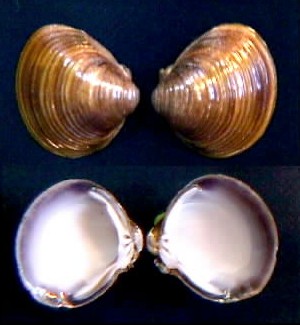Hurcott Farm facts for kids
| Site of Special Scientific Interest | |
| Area of Search | Somerset |
|---|---|
| Coordinates | 51°03′46″N 2°41′57″W / 51.06274°N 2.69918°W |
| Interest | Geological |
| Area | 26.3 hectares (0.263 km2; 0.102 sq mi) |
| Notification | 1993 |
Hurcott Farm is a very special place in Somerset, England. It's known as a Site of Special Scientific Interest (SSSI) because of its unique geology. This means it's a protected area where scientists can study Earth's history and learn about ancient environments.
Contents
Discovering Hurcott Farm's Secrets
Hurcott Farm covers about 26.3 hectares, which is roughly the size of 50 football fields! It was officially recognized as an SSSI in 1993. The main reason it's so important is because of the ancient river deposits found there.
What are Geological Sites of Special Scientific Interest?
A Site of Special Scientific Interest (SSSI) is a protected area in the United Kingdom. These sites are chosen because they have important wildlife, plants, or geological features. Protecting them helps scientists study nature and history, and keeps these special places safe for the future. Hurcott Farm is protected for its geology, which means its rocks and landforms tell us a lot about the past.
A Glimpse into the Ice Age Past
At Hurcott Farm, you can find very old river deposits called terrace gravels. These gravels were laid down by the River Cary a very long time ago. They are from a period called the Pleistocene epoch. This was a time when Earth experienced many ice ages, with huge glaciers covering large parts of the planet.
What are Terrace Gravels?
Imagine a river flowing through a valley. Over thousands of years, the river can cut deeper into the land or change its path. As it does, it leaves behind layers of sand, pebbles, and rocks on its old floodplains. These old riverbeds, now higher up, are called terrace gravels. At Hurcott Farm, these gravels are "heavily cemented," meaning they have been squashed and stuck together over time, making them very hard.

Ancient Life in the Gravels
The most exciting part about Hurcott Farm's gravels is what they contain: lots of ancient molluscs! Molluscs are a group of animals that include snails, slugs, and clams. The fossils found here are from both freshwater and land-dwelling molluscs.
What are Molluscan Fossils?
Fossils are the preserved remains or traces of ancient life. The molluscan fossils at Hurcott Farm give us clues about the environment millions of years ago. They show us what kinds of snails and clams lived in the rivers and on the land during that time.
Meet the Ancient Molluscs
The mollusc fossils found at Hurcott Farm tell us that the climate was warmer than it is today. This is because the types of molluscs found, like Corbicula fluminalis and Pisidium clessini, are usually found in warmer conditions. This suggests that these gravels were formed during an interglacial period. An interglacial period is a warmer time between two ice ages, when glaciers melt and sea levels rise.
Why Hurcott Farm is So Important
Hurcott Farm is super important for understanding the geology of southern Somerset. It's like a key piece of a puzzle. The layers of gravel and the fossils within them help scientists figure out the timeline of events during the Pleistocene epoch in this region. This is called Pleistocene stratigraphy.
It also helps us understand other geological features in the area, like the "Burtle Beds." The Burtle Beds are another set of ancient deposits in Somerset. Hurcott Farm's gravels are considered a "freshwater facies-equivalent" of the Burtle Beds. This means they were formed at the same time but in a freshwater environment, while the Burtle Beds might have formed in a different type of water, like a sea or estuary. By studying both, scientists get a fuller picture of the ancient landscape.

